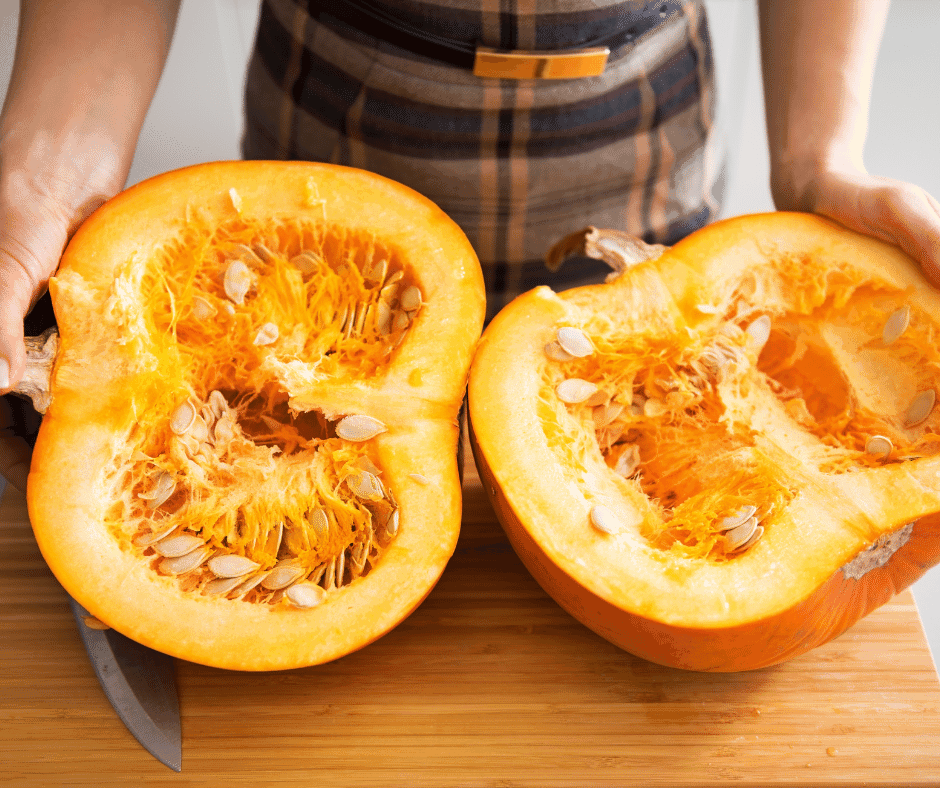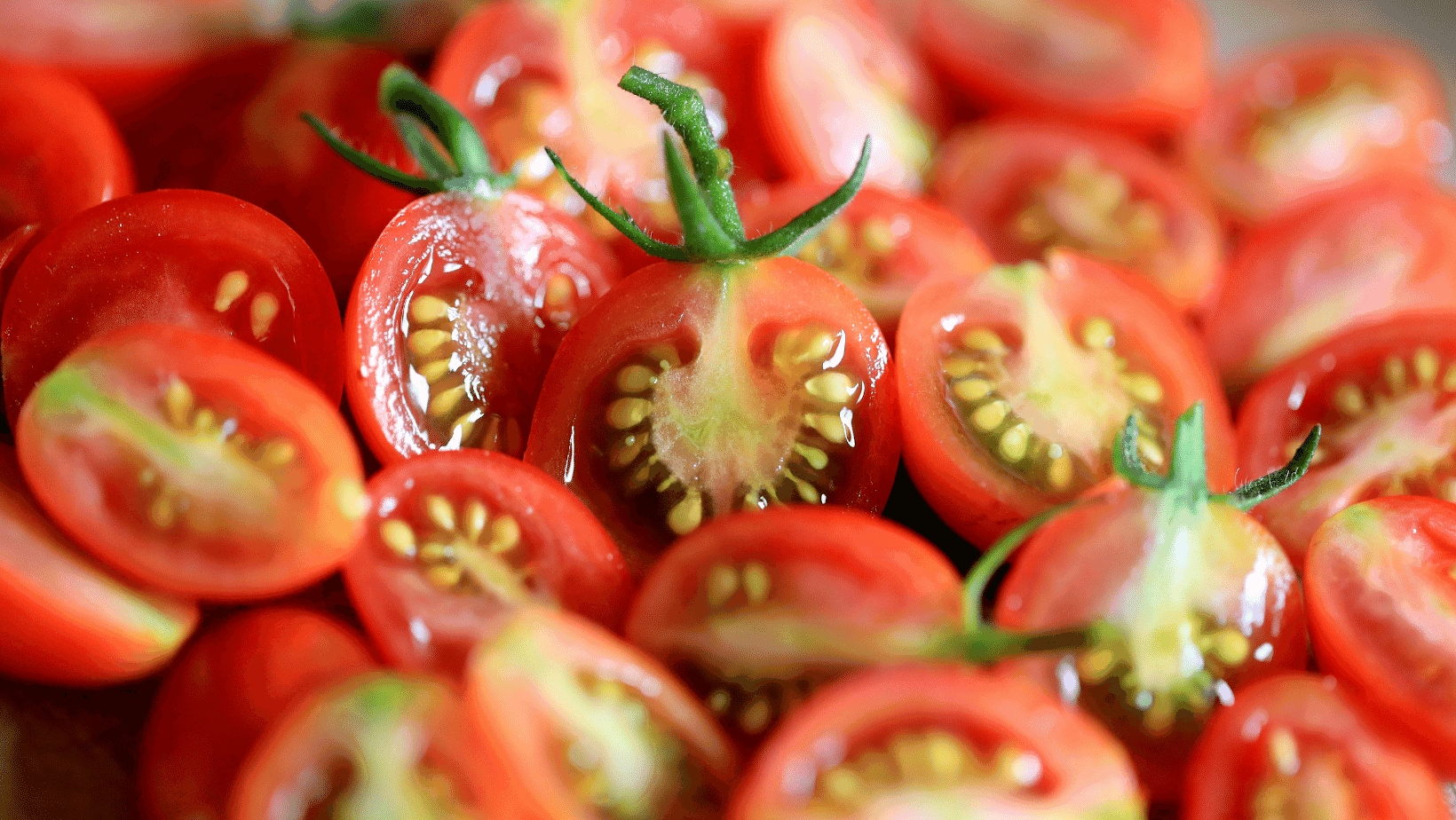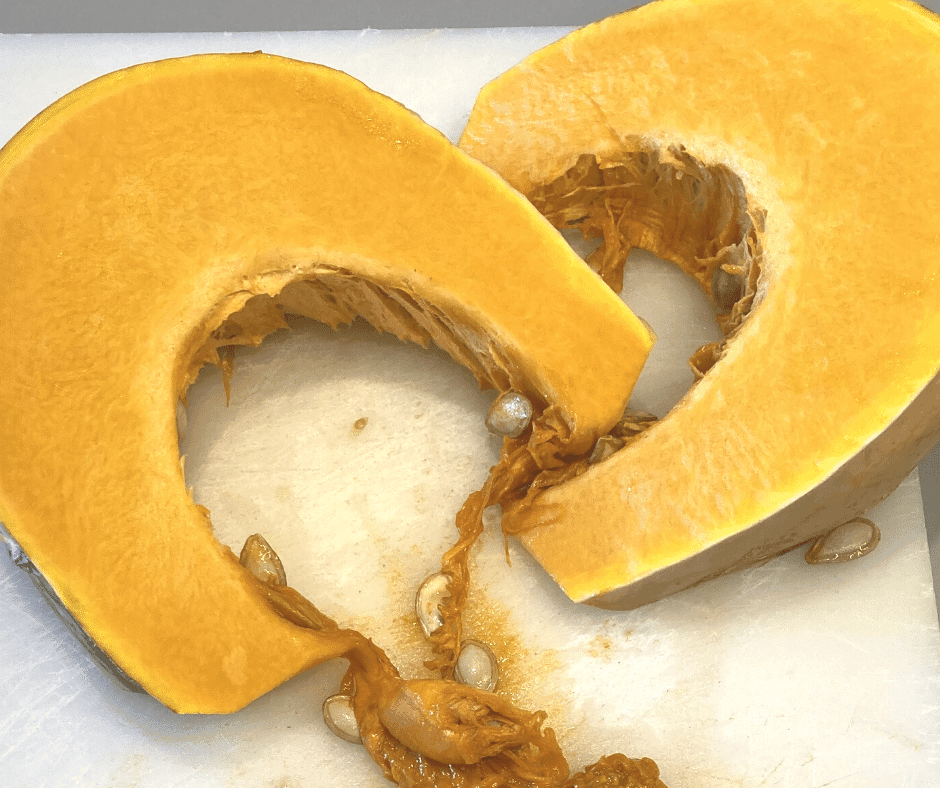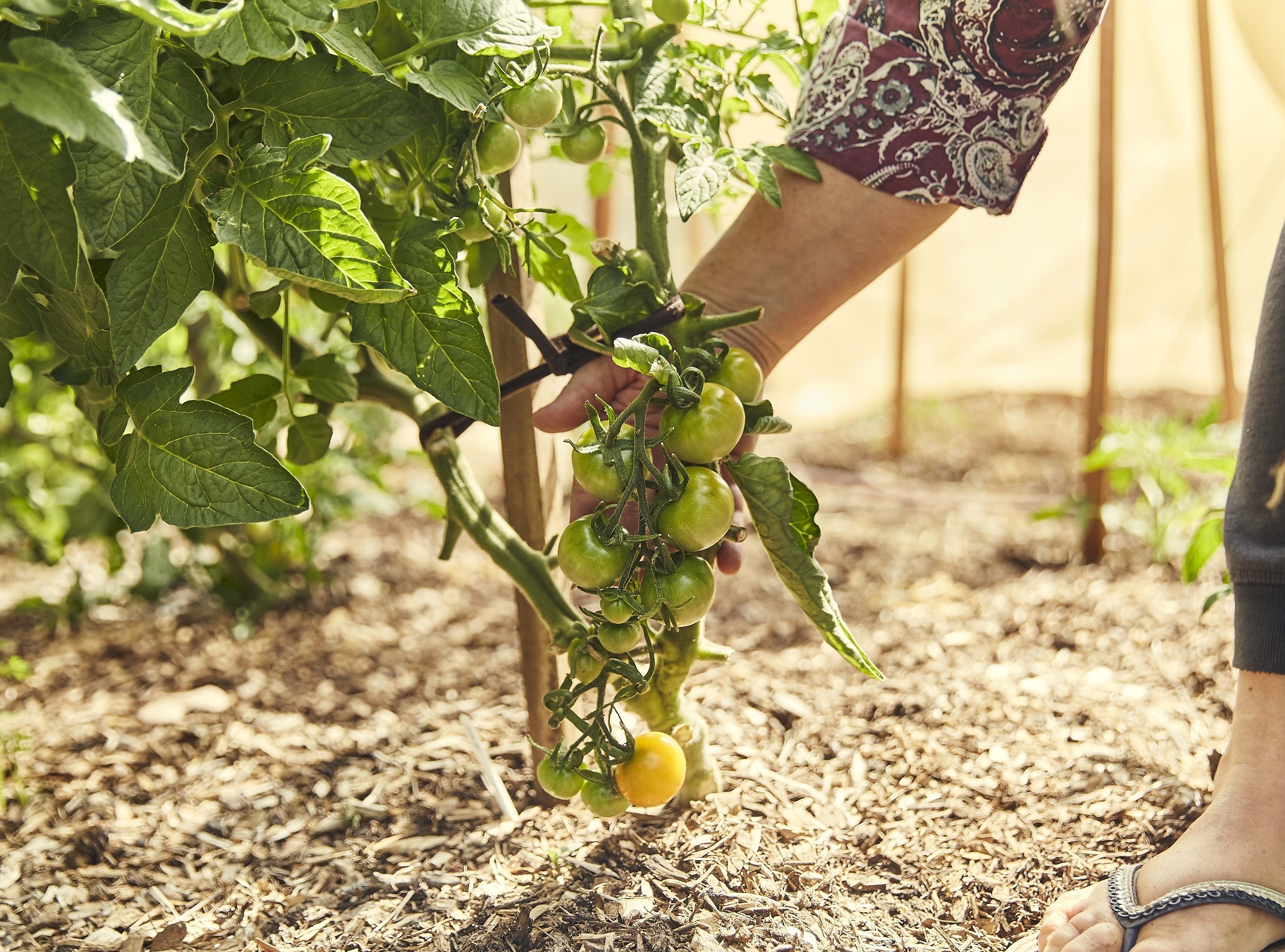Saving vegetable seeds is a great way to save cash – if you do it right, you can turn one crop or store-bought vegetable into a lifetime’s supply! If you’ve never saved seeds before, it might seem daunting – luckily, it’s really easy. Read on for the hack that’s going to take your food gardening to the next level of cheapness.

Can you save seeds from store-bought vegetables?
Yes. However, seeds from organic veggies are your best bet. An easy way to start is with vegetables that have visible seeds in the part of the vegetable that you eat, aka the fruit.
For example:
- tomatoes
- pumpkins
- cucumbers.
If you’d like to save a seed from a plant that doesn’t have a fruit – like kale, broccoli, lettuce, onion, carrot, or parsley – keep scrolling.

How to save tomato seeds
Got a tomato that’s looking a bit sad? Or maybe you have discovered your new favourite tomato variety from your local fruit and vegetable store?
Here’s how to collect the seeds to sow a delicious crop:
- Squash out the seeds of the tomato onto some paper towel.
- Spread the seeds out to dry.
- Once completely dry, store the seeds somewhere cool, dry and dark until next tomato planting season – check out our what to plant when guide to find out when that is.
Tomato seeds will stick to the paper towel but there is no need separate them because you can plant the little bit of paper along with the seed.
How to save cucumber and pumpkin seeds
Whether you’re working with a pumpkin or cucumber you’ve left too long to eat or you’ve specifically bought a delicious-looking organic one in the hopes of reproducing it in your own garden, here’s the process to save the seeds:
- Scoop out the seeds.
- Remove the seeds from the flesh – you can pop them in a sieve and run them under water to help with this, but don’t worry about trying to remove every last trace of the flesh.
- Put the seeds on a paper towel and spread them out so they aren’t touching each other.
- Find somewhere for them to dry that’s out of direct sunlight.
- Wait until they are completely dry and then store them in a cool, dry and dark place until next planting season.

How do you save seeds from plants that don’t have a fruit?
First, you’ll need to grow the plant yourself and let it go to seed – essentially, leave it alone until it produces flowers that turn into seeds.
In some cases, like broccoli, this means not eating a beautiful looking head of broccoli that you would have otherwise picked to eat.
Unfortunately, you don’t get to save your seed and eat the produce, too. You generally want to leave your best plant – for example, the plant with the biggest, healthiest and tastiest looking broccoli. This plant will be the one that was best suited to the conditions and climate at your house.
Think of it this way: saving seeds from the plants that thrived, and not the ones that struggled, will eventually give you a strain perfectly adapted to your garden, which will be increasingly beneficial as our climate changes.
If you’ve got a large veggie patch, saving seeds from plants without fruit can be as simple as letting the seed pods dry while still on the plant, then grabbing the seeds when they’re ready and sprinkling them around the yard.
If you’ve got a small space and want to plant something else there in the meantime, you might like to pick the whole plant, hang it upside down somewhere to dry, harvest the seeds when they mature and save them for next season.
If you let your seeds dry in the garden, keep an eye on the local wildlife – while it’s great to share, if it seems like the birds are nabbing all the seeds before you get a chance, we suggest drying your plants inside instead.
Top tips for storing seeds you’ve saved
- Make sure that the seeds are totally dry before you store them. If they are even slightly damp, they may get mouldy. Plastic sweats, so to store them in paper.
- Store your seeds somewhere that rats and mice can’t get to them, otherwise they might not be there when you go looking for them.
- Put the date on the packet and something about the variety – this can be as simple as ‘delicious, little, green pumpkin, summer 2022’.
- Save seeds from the healthiest plant or the one that produces the tastiest vegetables.

What is the easiest vegetable to grow from seed?
This is undoubtedly a matter of opinion but our vote is with tomatoes. They grow easily, don’t mind having their roots disturbed (so you can move them if needed), not many critters like to eat them, and in general, they are a really hardy plant. They’re also great bang for your buck!
If you have a home compost, you might even find bonus tomato plants spring up out of it. If this happens, just dig them up and plant them somewhere you’d like them to grow.
Potatoes and pumpkins would be our next recommendations, for similar reasons.
How long do vegetable seeds last?
Seeds can lay dormant for years and years but shop-bought seed packets will usually tell you to use them within 2 years.
They won’t go off but the older they get, less of them will sprout – even if you follow all the seed-planting tips perfectly.
What fruit can you grow from seed?
Fruit seeds generally need special preparation called stratification – essentially a fancy word for tricking them into thinking they have experienced a cold winter.
For example, growing peaches involves removing the kernel from the peach pit, putting it in a plastic bag with moist potting mix into the freezer, and leaving for 2-3 months until roots have started to grow.
We’d recommend looking up the specific fruit you’d like to grow before attempting it at home and also keeping in mind that there is lots of cross pollination between trees, so there’s no guarantee a seed is going to give you an exact replica of the tree that your fruit came from.
Lots of fruit trees are actually grown from cuttings and are grafted onto rootstock – that means the part that produces the delicious fruit is from one tree and the roots and lower trunk are from another with a strong root system.
Find out more local gardening tips
Just beginning your food gardening journey? Head to our food gardening hub for more tips and tricks.